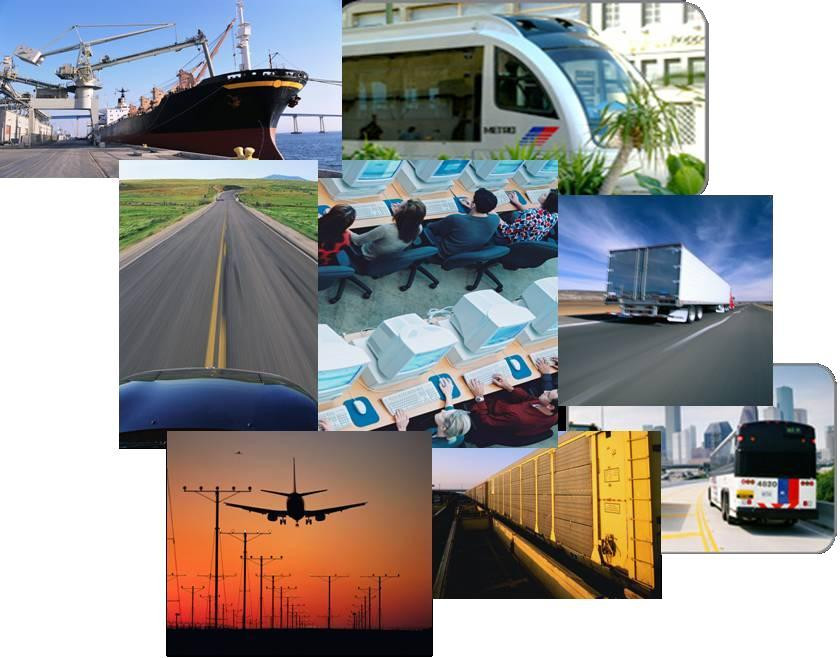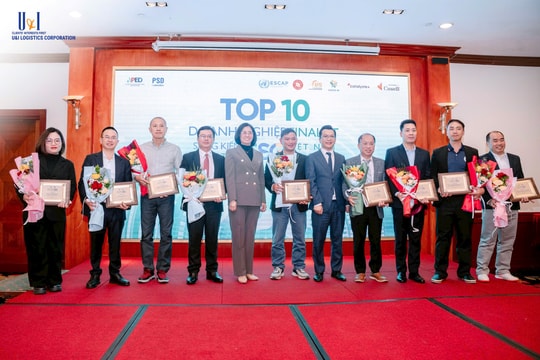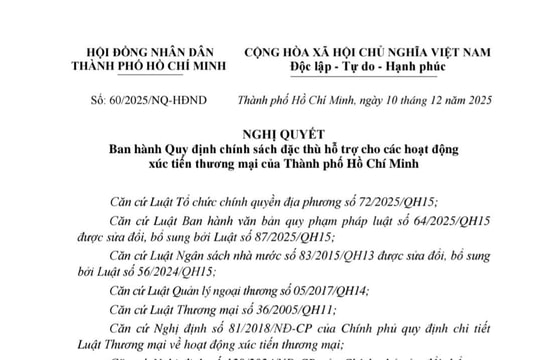
From “Gaining Market Share in Sea Transport: Where to Start?” 2 main issues have been mentioned: broadened legal framework and training human resources of advanced skills, and now a total dominating issue is going to be discussed: upgrading transportation system and synchronizing seaport infrastructure. Normally, infrastructures of transportation and sea port system should be first considered when grading a country’s economy development stability for they not only take important parts in development but also are a solid base for logistics development in the country.
UPGRADING THE COUNTRY’S TRANSPORTATION SYSTEM
The country’s transportation system, in general, is not adequate to meet the development of the country’s economy and economy as well: road and bridge system of under standard, which does not ensure smooth operations of container trucks; local road networks that have not been connected to deep water sea ports; and ineffective uses of multi modal transportations.
Road network
According to statistics for the Directorate for Roads of Vietnam, the Vietnam road network is 280,008 kilometers in length (including 16,839 kilometers of national highways; 25,449 kilometers of provincial roads; 17,025 kilometers of city roads; 7,837 kilometers of specialized roads; and 212,857 kilometers of commune roads), and 28,000 bridges all over the country. 56% is managed by 4 Road Management Zones, and the rest of 44% is managed by local Transport Services. Roads of level I,II,III account for 47%, and the rest of 53% is of lower level. There have been attempts to construct new roads, and to upgrade existing ones, but it is still inadequate to meet the need of development. There have recently been some express ways; they, however, are “nearly-express” ways in term as Cau Gie-Ninh Binh, HCMC-Trung Luong, Ha noi-Hai Phong, and Ha noi-Lang Son. There are 3 others to be built: Noi Bai-Lao Cai, HCMC-Long Thanh-Dau Giay, Hai Phong-Ha noi 2… but it is going to take a few years to finish.
As the approved Infrastructure Development Plan till 2020, vision 2030, 22 express ways with the total length of 5,837 will be built and they, together with existing roads, will make up a synchronous, state-of-the-art road network of a country of strong sea-based economy in 2020. However, according to Vietnam Expressway Corporation (VEC) evaluation, this is almost an “impossible” mission for the investment capital has been mainly taken from ODA-funded capital, commercial loan and mobilized capital from the public. Therefore, improving and upgrading the road network should be considered seriously in the first stage, and then the express way network will be gradually completed in the future.
Therefore, it is suggested that the National Highway 1A (North-South), belt roads and economic corridors, and arterial traffic axes to dynamic economic zones (as National Highways 51,13, 19…) to deep water sea ports, international gateway ports be upgraded and improved to reach international standards for container trucks’ traffic (lanes to be broadened, bridges’ and roads’ load to be upgraded, traffic signed to be installed…). And there should be plans to reopen roads to deep water sea ports which are currently isolated as road 956 connecting the Cai Mep-Thi Vai deep water sea port to National Highway 51 should be completed, or road to Hiep Phuoc port, Nha Be, HCMC should be opened… and as the same time the coastal road system from Nui Do Mui Ngoc of Mong Cai Town, Quang Ninh – which is under construction- to Xa Xia gateway, Ha Tien, Kien Giang with the length of 3,217 kilometers should be completed to develop 15 coastal economic zones, which will be of great potential to Vietnam logistics in the time to come.
Railroad
The railroad network of Vietnam has been founded and existing for nearly two centuries with the track size of 1.00 meter. The network in the North, which was developed in 1955-1975, was seriously damaged in the war; that in the South was not being used for a long time and has been recovered since 1976. Weak infrastructure leads to low speed and low load capacity. However, railroad has been considered as an effective mean of transportation to logistics.
In Europe, America and China, the railroad networks have been well-developed, especially for container transporting. Vietnam railroad network should be upgraded step by step: changing the track size from 1.00 meter to 1.435 meter to meet international standard, therefore making it possible to increase train’s speed. A railroad network is a “must-have” for increasing transportation market share; encouraging container transportation; connecting to deep water sea ports, international gateway ports and key agricultural and industrial zones; and it is considered a mean of transportation to develop logistics. Research work should be carried out to establish modern railroad network in Tay Nguyen area to supply regularly to the ports in the Central. In the South East, it is necessary to start building a railroad network connecting the key dynamic economic zones to Cai Mep-Thi Vai’s, and HCMC’s deep water sea port system, encouraging abilities of ICDs and logistics centers, being ready to join the Asia-Europe railroad network, which will be established in the near future.
The North-South railroad network should be modernized: twin tracks which enable trains to reach the speed of 80-100km/h for both cargo and passenger transport. And the project of North-South express railroad should be put off until there is a better economic climate.
Waterway
Vietnam waterway network is unequally distributed, mostly in Red River Delta and Mekong Delta. Therefore, waterway transportation has not been as well-developed as other means of transportation. In the North, the river network is effective serving transportation for the Red River delta and coastal pot system as Hai Phong, Quang Ninh…, especially barges have been proved to such an effective mean of transportation for bays, North Eastern coastal region. In the South, waterway transportation has maintained its dominating role. It is easy to approach to sourcing area, agricultural zones from logistics centers, deep water ports, or big cities. There have been many specialized barges transporting containers from the Mekong Delta to HCMC to upload them on vessels. Although it is a few in number, it promises a better development for Vietnam logistics, especially when it is possible to broaden the network to Cambodia via Mekong River.
It is an urgent important task for us, strategy planners, to decide how much capital should be invested in upgrading road network and waterway network to develop the Mekong Delta.
Besides, it has been suggested that another canal should be made to replace Cho Gao Canal (Tien Giang), which has been suffering from regular congestions for overload. However, there have been ideas that broadening the existing canal and having better management can solve the issue.
Similarly, how to develop logistics in the Mekong Delta and what workable solutions to be found can be an interesting matter for logistics planners.
Airway
In the world, aviation transport has had slower development compared to other means of transportation which are simpler and less expensive as road, railroad or water way… Although there have been 50 airlines operating in Vietnam, it is relatively small in size. Aviation logistics services have been operating in Vietnam international airports in “special” manner, which is relatively closed and rarely mentioned by the press. In the future, aviation logistics can have a more important role in newly-built Long Thanh air port, Dong Nai and in those from other areas. It is said that the aviation has been training its high-skilled staff to catch up with the development of the logistics sector in the future. We believe the aviation will be an active factor to bring Vietnam logistics to the world’s logistics market.
SYNCHRONIZING THE SEA PORT INFRASTRUCTURE
Sea port infrastructure has long been considered as a backbone of sea transport, especially when there were the birth of container transportation and logistics. Sea ports have become centers that connect a national transportation network to the world outside, and places where multi modal transportation is carrying out with logistics as a dynamic force. It is necessary to synchronize sea port infrastructure so that logistics sector and services businesses can be well-developed. In the recent article on competitive abilities and stable development of Vietnam sea port system, the author put emphasis on the lack of scientific research and non-synchronization in building the port system in recent years, causing waste of national resources and public capital.
Issue 59, article 2, chapter IV of the Vietnam Maritime Code states: “Sea port infrastructure includes harbor infrastructure and public seaport infrastructure”.
Harbor infrastructure includes berths, water area in front of them, warehouses, factories, service offices, systems of transportation, communication, electric-power, water supply, luồng nhánh cảng biển, and other accessories installed in the harbor and the water area in front of the berth. And public seaport infrastructure includes navigation ways, notification signs and other accessories work.
Although they are physically different, actually they are actually the whole structure that serves sea ports. There are other factors that do have effects on business efficiency and uploading/loading capacity: chân hàng, equipments and devices, technology, staff’s skills and connection to national traffic network with logistics centers and the global sea port network that ensure a flow of goods from the place of manufacturing to customers at the lowest coast, creating value added source to logistics and sea ports as well (3PL and 4PL logistics).
At the end of the article, we do hope that the matters will soon be considered and solved, helping Vietnam logistics to develop in harmony and synchronicity.



.png)




.png)

.png)



.png)
.png)
